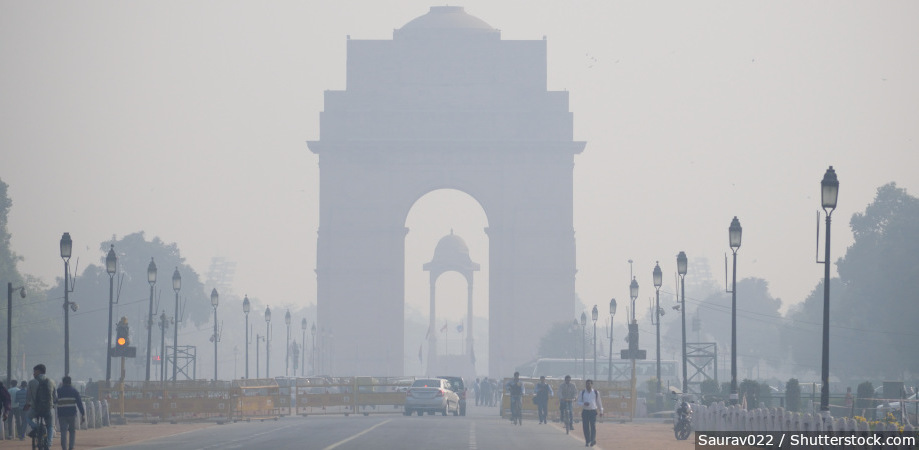Delhi Govt Says Air Pollution Was Lowest In 5 Yrs This Diwali. Fact: Partly True

New Delhi: Delhi’s Chief Minister Arvind Kejriwal has claimed that air pollution on Diwali night this year has been the lowest in five years.
This claim is partly true, our fact-check found, though experts said favourable weather was partly the reason.
"After 8:30 pm yesterday, I could hear some sound of crackers bursting,” Kejriwal said. “I was very happy that as compared to the last few years, there was less bursting of crackers. The pollution figures obtained have revealed that pollution has been the lowest in the last five years on Diwali night.”
The statement was true for hourly pollution peaks, as well as 24-hour average pollution levels (considered by most studies) that showed the lowest levels of pollution recorded in Delhi, but in the last four years, not five.
In 2015, Delhi’s 24-hour average pollution level on Diwali night was lower than this year’s.
Delhi recorded an air quality index (AQI) of 360--with particulate pollution (PM 2.5 and PM 10) as the main pollutants--between 4 pm on November 11 and 4 pm on November 12, 2015 (24-hour average including Diwali night of November 11), according to the AQI bulletin, released every day at 4 pm by the Central Pollution Control Board (CPCB).
AQI is a composite number--of levels of many pollutants--used by governments to communicate to the public how polluted the air is. AQI of 100 is considered acceptable in India.
The 2015 AQI was about 2% lower than Delhi’s 24-hour average particulate pollution AQI of 368 at 4 pm on October 28, 2019.
This year, Delhi’s AQI value during Diwali, however, is 5.6%, 8.6% and 17.3% lower compared to that of Diwali in 2018, 2017 and 2016, respectively, according to IndiaSpend’s analysis of the year-wise data from the CPCB.
| Particulate Pollution In Delhi During Diwali | |||||
|---|---|---|---|---|---|
| 2015 | 2016 | 2017 | 2018 | 2019 | |
| 24-hr avg AQI at 4 pm on the next day of Diwali (including Diwali night) | 360 (PM 2.5, PM 10) - Nov 12 | 445 (PM 2.5, PM 10) - Oct 31 | 403 (PM 2.5, PM 10) - Oct 20 | 390 (PM 2.5) - Nov 8 | 368 (PM 2.5, PM 10) - Oct 28 |
| 24-hr avg AQI at 4 pm on Diwali (including a night before Diwali) | 343 (PM 2.5, PM 10) - Nov 11 | 431 (PM 2.5) - Oct 30 | 319 (PM 2.5, PM 10) - Oct 19 | 281 (PM 2.5, PM 10) - Nov 7 | 337 (PM 2.5, PM 10) - Oct 27 |
Source: Central Pollution Control Board
Reduction in peak pollution on Diwali
Peak pollution levels in Delhi this Diwali were dangerously high, though they were lower than last year’s.
On Diwali night, PM 2.5 peaked at 1,070 μg/m3 on October 28 at 12 am (17 times higher than the limit considered safe by the Indian regulator). This was 31% lower than the 2018 Diwali peak of 1,560 μg/m3 on November 8, as per data from the Delhi Pollution Control Committee, an autonomous body.
PM 2.5 is about 30 times finer than a human hair. These particles can be inhaled deep into the lungs, causing heart attacks, strokes, lung cancer and respiratory diseases.

Source: Delhi Pollution Control Committee
While the Delhi government claims that these reductions are the result of rigorous rule enforcement, experts said current climate conditions have played a big role.
The weather after September this year has remained “relatively favourable”, resulting in low levels of pollution in the weeks leading up to Diwali, said an October 28, 2019, analysis by the Centre for Science and Environment (CSE), a Delhi-based environmental think-tank.
“This was a warmer and windier Diwali than 2018”, which led to a sharp fall in peak pollution after 3 am. In 2018, peak pollution had continued until 8 am the day after Diwali, according to the CSE analysis.
(Tripathi is an IndiaSpend reporting fellow.)
We welcome feedback. Please write to respond@indiaspend.org. We reserve the right to edit responses for language and grammar.


